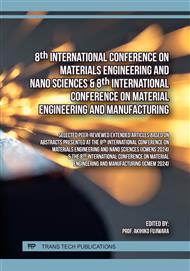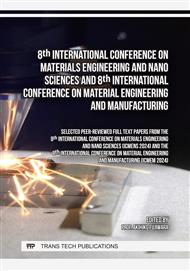p.53
p.59
p.65
p.71
p.79
p.87
p.93
p.99
p.105
Combined Influence of a Liner Deformation and Couple Stresses on the Partial Bearing Aspect Ratios
Abstract:
The two aspect ratios 1.0 and 0.5 analysed comparatively to perform a stability study of a 120° partial arc journal bearing have lubricated with a fluid of couple stresses. Reynold’s equation in modified form is obtained for couple stresses and coupled with elasticity equation to predict the impact of deformation in bearing liner on stability characteristics of journal bearing to know its performance. The results quoted here are in terms of attitude angle, somerfeld number, critical mass, whirl frequency and threshold speed. The conclusion made shows that the bearings with high aspect ratio (1.0) are more stable than aspect ratio 0.5 for the fluid of couple stresses and its stability is improved by the use of fluid with couple stresses. Threshold speed is reduced with an increase in the factor of liner deformation and shows that the region of stability is reduced on increasing deformation of bearing liner.
Info:
Periodical:
Pages:
105-110
Citation:
Online since:
September 2024
Authors:
Price:
Сopyright:
© 2024 Trans Tech Publications Ltd. All Rights Reserved
Share:
Citation:



